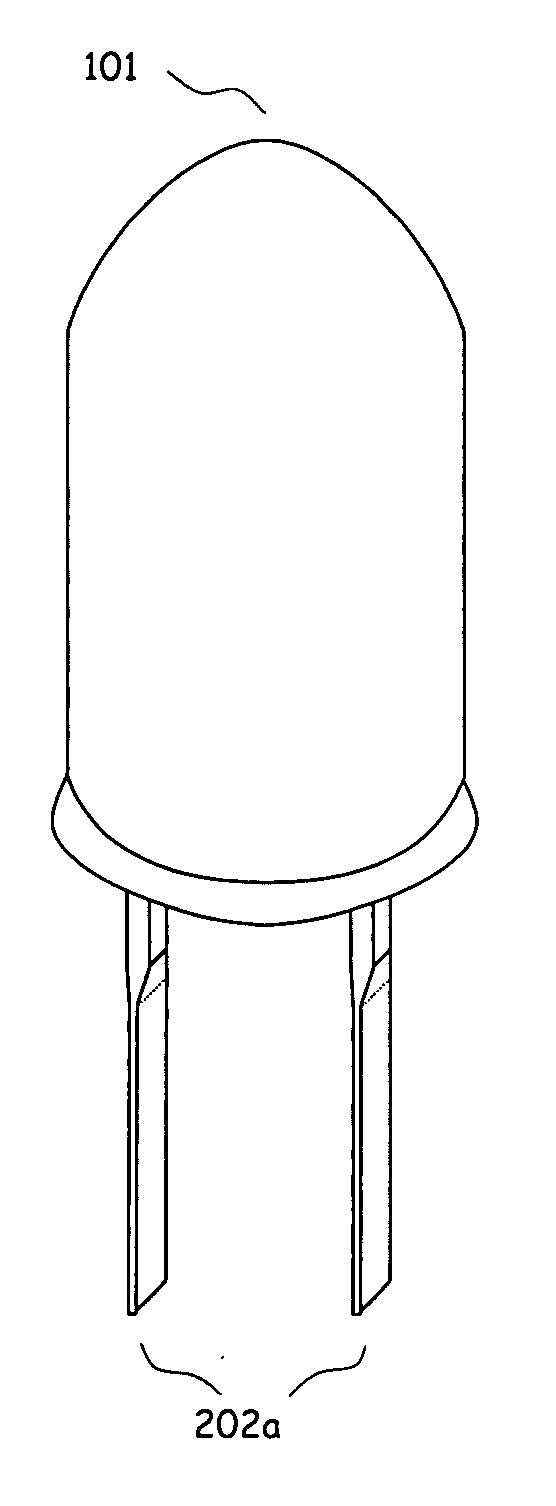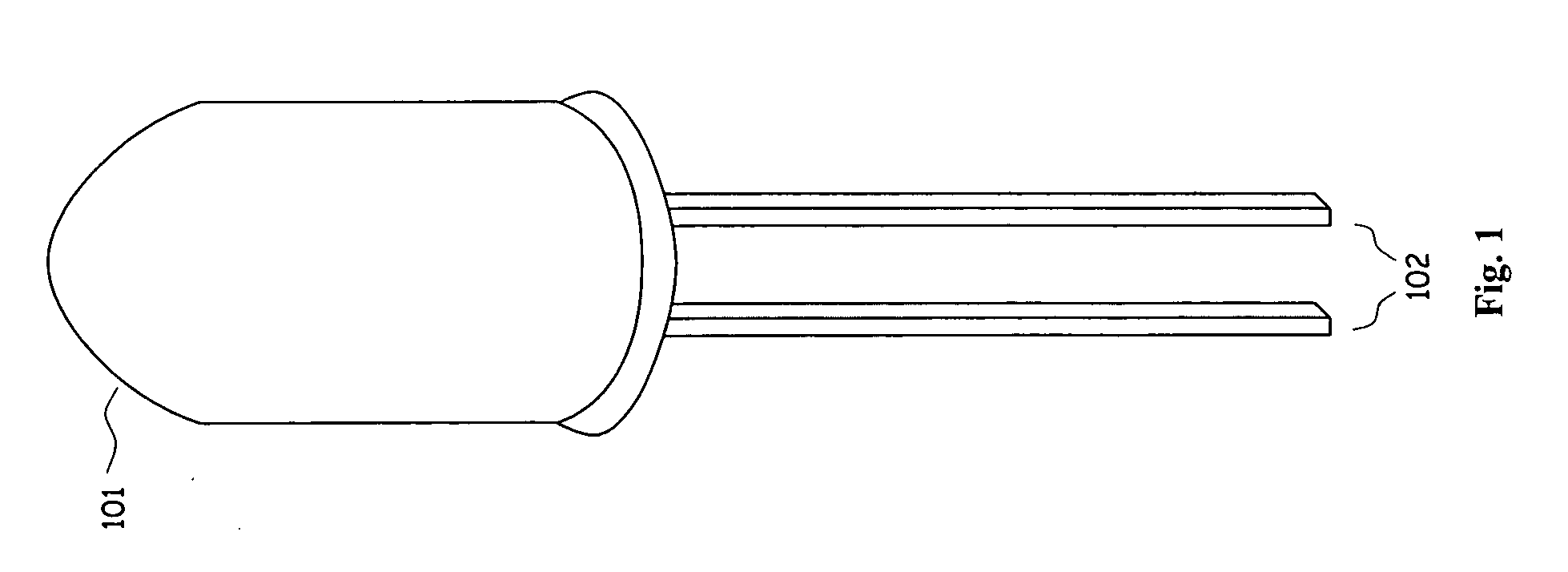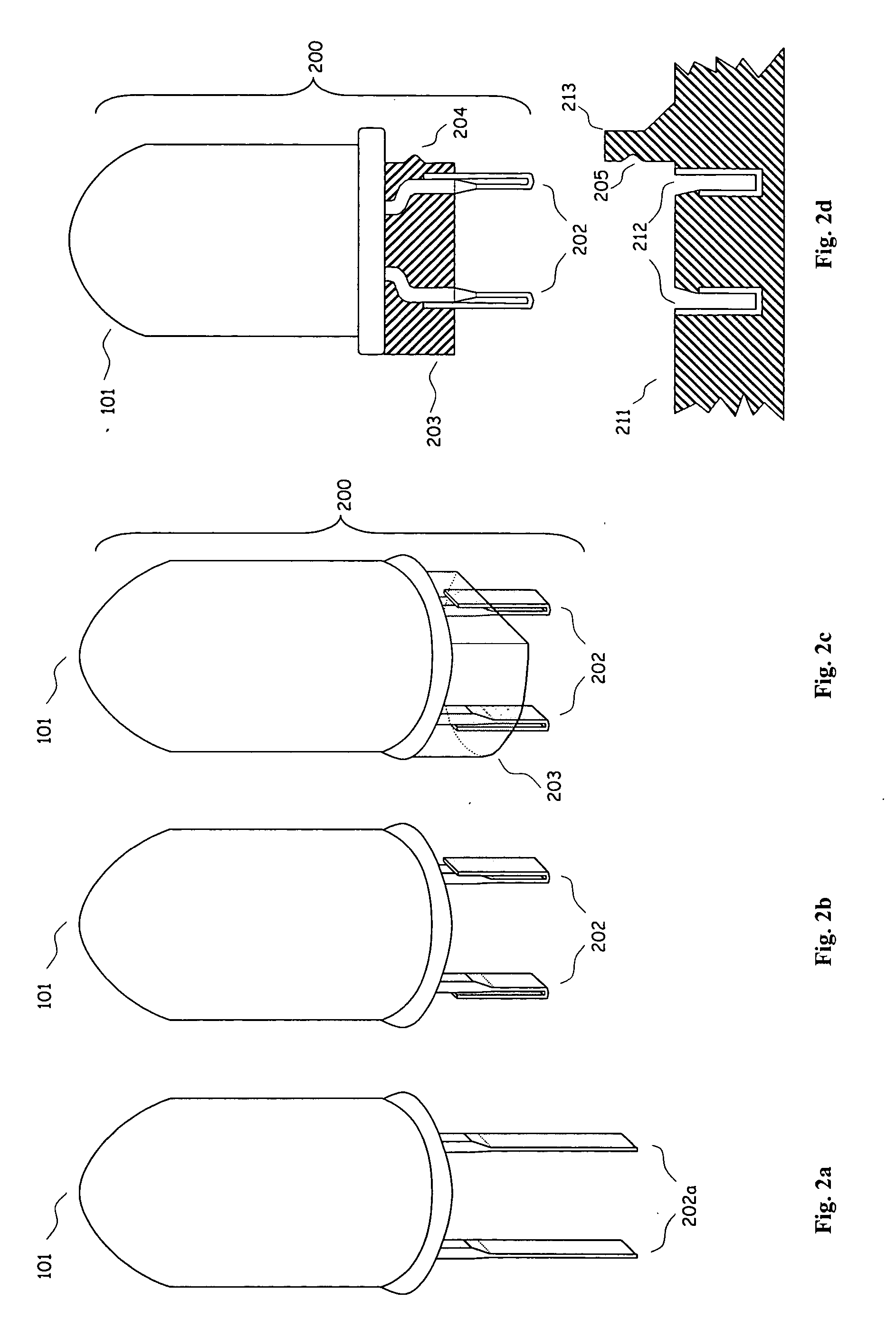Method and system for attachment of light emitting diodes to circuitry for use in lighting
a technology of light emitting diodes and circuits, applied in the direction of lighting support devices, lighting and heating apparatus, coupling device connections, etc., can solve the problems of single layer circuit layout and more complex 541 800, and achieve the effect of increasing the contact area of these prongs, increasing the usability of leds, and being easy to attach to circuitry
- Summary
- Abstract
- Description
- Claims
- Application Information
AI Technical Summary
Benefits of technology
Problems solved by technology
Method used
Image
Examples
Embodiment Construction
[0038] A common LED is shown in FIG. 1 before any modification with a pair of leads both an anode terminal and a cathode terminal denoted by 102 and a LED package denoted by 101. In the preferred embodiment the LED 101 has both its leads 102 flattened to increase its surface area as shown by FIG. 2a both the flattened anode and cathode leads are denoted by 202a. The leads are then folded as denoted by 202 in FIG. 2b to form a pair of spring prongs. The folds in prongs 202 allows for some give or compression that helps ensure sufficient contact with a corresponding socket without having to manufacture the prongs nor its corresponding socket to very tight tolerances hence minimizing the cost of manufacturing and assembly. The pair of prongs 202 can then be further secured by adding some type of encasement denoted by 203 right below the base as in FIG. 2c the entire finished LED is denoted by 200. The encasement 203 can be mold on using plastic, resin, or other materials or pre-made in...
PUM
 Login to View More
Login to View More Abstract
Description
Claims
Application Information
 Login to View More
Login to View More - R&D
- Intellectual Property
- Life Sciences
- Materials
- Tech Scout
- Unparalleled Data Quality
- Higher Quality Content
- 60% Fewer Hallucinations
Browse by: Latest US Patents, China's latest patents, Technical Efficacy Thesaurus, Application Domain, Technology Topic, Popular Technical Reports.
© 2025 PatSnap. All rights reserved.Legal|Privacy policy|Modern Slavery Act Transparency Statement|Sitemap|About US| Contact US: help@patsnap.com



